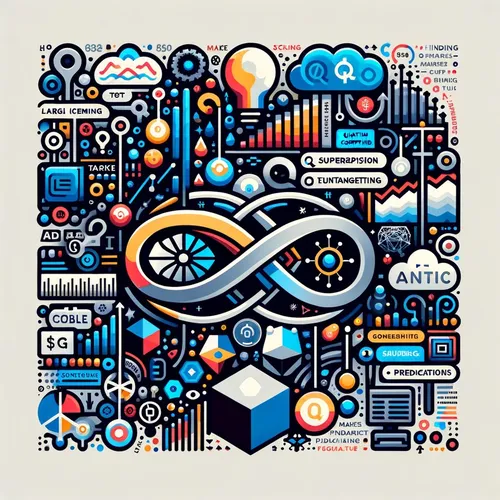QuEra's Quantum Leap: NVIDIA Partnership Ignites Hybrid Computing Era
- Author
- Quiet. Please
- Published
- Sun 14 Sep 2025
- Episode Link
- https://www.spreaker.com/episode/quera-s-quantum-leap-nvidia-partnership-ignites-hybrid-computing-era--67753814
This is your Quantum Market Watch podcast.
This is Leo, your Learning Enhanced Operator, welcoming you to Quantum Market Watch. Let’s skip the pleasantries—today’s quantum headline isn’t just news, it’s a seismic shift: just five days ago, QuEra Computing, in partnership with NVIDIA’s venture arm NVentures, announced a fresh injection of capital, expanding QuEra’s Series B round to $230 million. But the breakthrough isn’t just financial. It’s a signal moment for high-performance computing, as quantum-classical supercomputing steps out from theory and into the roadmap.
Right now, deep inside Japan’s ABCI-Q facility, you’ll find a QuEra Gemini-class quantum computer pulsing alongside over 2,000 NVIDIA H100 GPUs. The environment echoes with the cool hum of fiber lasers, the magnetic click of atoms snapping into Rydberg state—literally frozen in midair, manipulated by controlled electromagnetic fields. It’s a quantum ballet set to the rhythm of CUDA-Q, NVIDIA’s software stack. Here, the hybrid workflow isn’t a demo; the system is running fault-tolerant algorithms, decoding quantum errors in real time with transformer-based AI models trained on NVIDIA’s top-tier hardware.
What makes this week’s announcement so pivotal? We’re seeing the convergence of cloud infrastructure, artificial intelligence, and quantum hardware—a kind of triple entanglement. QuEra’s neutral-atom quantum computers, backed by Google and now deeply integrated with NVIDIA, are being deployed directly into the heart of HPC centers. The goal: accelerate early quantum utility by closing the loop between algorithm design and real-world deployments. QuEra is no longer operating as a distant curiosity for academic labs but as a core partner for enterprise and government clients worldwide.
Technical precision is my daily language, so let’s go beneath the surface. Neutral atoms offer an unmistakable advantage: their qubits, unlike solid-state spins or photons, are isolated from noisy environments and scalable with optical tweezers. The challenge has always been error correction—quantum bits, just like markets, can suffer cataclysmic fluctuations from the tiniest disturbances. By weaving AI-driven decoders into the pipeline, QuEra and NVIDIA have made real strides in identifying and stabilizing quantum states—improving coherence and scalability, edging ever closer to practical fault tolerance.
This move by QuEra punctuates a broader industrial reckoning. Japan has dubbed 2025 the first year of quantum industrialization, and national investments from China, the U.S., and Europe exceed $15 billion. The relevance for sectors like finance, logistics, and drug discovery is profound: hybrid quantum-classical supercomputing could unlock speedups for portfolio optimization, traffic simulation, or molecular design, slashing time-to-market and empowering new innovation.
As I walk through the GPU-packed corridors of a quantum lab, the cold blue glow reflecting off steel racks feels less like science fiction and more like a glimpse of tomorrow’s commerce. Quantum parallels aren’t limited to the lab; just as a market can be shaken by hidden volatility, quantum systems deliver answers from the probability clouds—revealing the invisible, with the right measurement.
Thanks for joining me, Leo, today on Quantum Market Watch. If you ever have questions or want a topic explored on air, send an email to [email protected]. Be sure to subscribe, and remember: this has been a Quiet Please Production. For more, check out quietplease.ai.
For more http://www.quietplease.ai
Get the best deals https://amzn.to/3ODvOta
